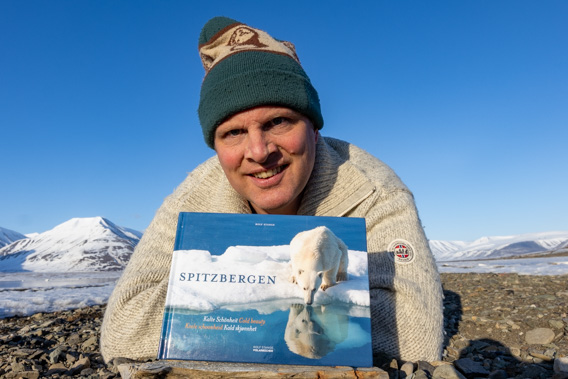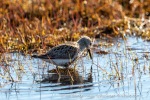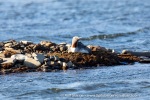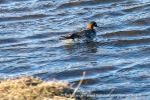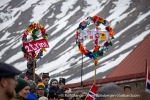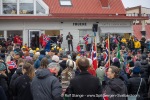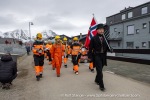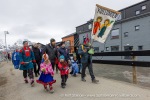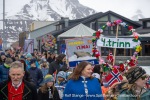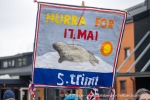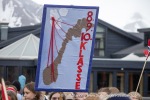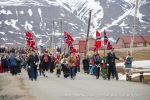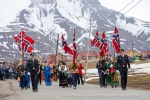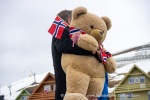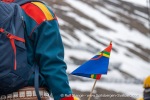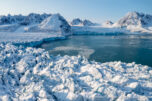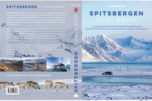-
current
recommendations- Liefdefjord
New page dedicated to one of Spitsbergen's most beautiful fjords. Background information and many photos.
- New Spitsbergen guidebook
The new edition of my Spitsbergen guidebook is out and available now!
- Liefdefjord
New page dedicated to one of Spitsbergen's most beautiful fjords. Background information and many photos.
Page Structure
-
Spitsbergen-News
- Select Month
- May 2025
- April 2025
- March 2025
- February 2025
- January 2025
- December 2024
- November 2024
- October 2024
- September 2024
- August 2024
- July 2024
- June 2024
- May 2024
- April 2024
- March 2024
- February 2024
- January 2024
- December 2023
- November 2023
- October 2023
- September 2023
- August 2023
- July 2023
- June 2023
- May 2023
- April 2023
- March 2023
- February 2023
- January 2023
- December 2022
- November 2022
- October 2022
- September 2022
- August 2022
- July 2022
- June 2022
- May 2022
- April 2022
- March 2022
- February 2022
- January 2022
- December 2021
- November 2021
- October 2021
- September 2021
- August 2021
- July 2021
- June 2021
- May 2021
- April 2021
- March 2021
- February 2021
- January 2021
- December 2020
- November 2020
- October 2020
- September 2020
- August 2020
- July 2020
- June 2020
- May 2020
- April 2020
- March 2020
- February 2020
- January 2020
- December 2019
- November 2019
- October 2019
- September 2019
- August 2019
- July 2019
- June 2019
- May 2019
- April 2019
- March 2019
- February 2019
- January 2019
- December 2018
- November 2018
- October 2018
- September 2018
- August 2018
- July 2018
- June 2018
- May 2018
- April 2018
- March 2018
- February 2018
- January 2018
- December 2017
- November 2017
- October 2017
- September 2017
- August 2017
- July 2017
- June 2017
- May 2017
- April 2017
- March 2017
- February 2017
- January 2017
- December 2016
- November 2016
- October 2016
- September 2016
- August 2016
- July 2016
- June 2016
- May 2016
- April 2016
- March 2016
- February 2016
- January 2016
- December 2015
- November 2015
- October 2015
- September 2015
- August 2015
- July 2015
- June 2015
- May 2015
- April 2015
- March 2015
- February 2015
- January 2015
- December 2014
- November 2014
- October 2014
- September 2014
- August 2014
- July 2014
- June 2014
- May 2014
- April 2014
- March 2014
- February 2014
- January 2014
- December 2013
- November 2013
- October 2013
- September 2013
- August 2013
- July 2013
- June 2013
- May 2013
- April 2013
- March 2013
- February 2013
- January 2013
- December 2012
- November 2012
- October 2012
- September 2012
- August 2012
- July 2012
- June 2012
- May 2012
- April 2012
- March 2012
- February 2012
- January 2012
- December 2011
- November 2011
- October 2011
- September 2011
- August 2011
- May 2011
- April 2011
- March 2011
- February 2011
- January 2011
- December 2010
- November 2010
- September 2010
- August 2010
- July 2010
- June 2010
- May 2010
- April 2010
- March 2010
- February 2010
- November 2009
- October 2009
- August 2009
- July 2009
- June 2009
- May 2009
- April 2009
- March 2009
- February 2009
- January 2009
- December 2008
- November 2008
- October 2008
- August 2008
- July 2008
- June 2008
- May 2008
- April 2008
- March 2008
- February 2008
- April 2000
- Select Month
-
weather information
-
Newsletter

| Guidebook: Spitsbergen-Svalbard |
Home →
Yearly Archives: 2024 − News
Newest member state of the Spitsbergen Treaty: Turkey
The Spitsbergen Treaty was signed in 1920 and it came into force in 1925. It sealed Norwegian sovereignty over the Svalbard archipelago (the name “Svalbard” was not used in the treaty) and regulates access for citizens of treaty member states.
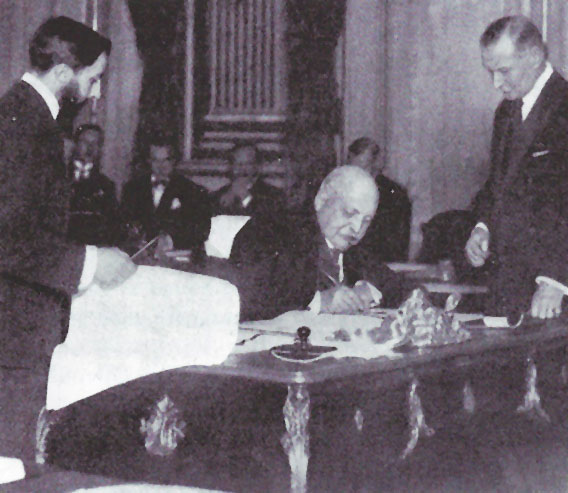
Fredrik Wedel Jarlsberg, the Norwegian negotiator in Paris,
signed the Spitsbergen Treaty on 09th February 1920 in Versailles.
A range of countries have joined the treaty since 1925. Until recently, Latvia and North Korea (!) had been the latest new members. Both joined the treaty in 2016.
In April 2024, however, Ankara ratified their signature under the Spitsbergen Treaty. Since then, Turkey is the latest signatory country.
This will not change much in real life: Norway does not make a difference between citizens of member states and those from other countries. There are, for example, more than 200 people from Thailand and the Phillipines living in Longyearbyen. Their respective countries of origin are not members of the Spitsbergen treaty.
Turkey appears to be interested on a different level, as the Barents Observer writes: recently in July, a delegation from Turkey visited Pyramiden, a former Russian coal mining settlement in Isfjord, to look at the potential of running a research facility there. Russia has announced plans to develop Pyramiden as an alternative to Ny-Ålesund, where a range of countries run research facilities under Norwegian leadership.
Page of the week: Sjuøyane
Sjuøyane is the page of the week. This page is dedicated to the little archipelago of ‘The Seven Islands’, which are the very northernmost islands and islets of the Svalbard archipelago.
The page has existed for years, but I have improved it significantly now with new map, images and photo gallery and the text has also got a couple of updates. When I work on the travel blog, linking places that we just visited to these pages, I like to make updates and improvements as I stumble over older pages that need some love.

Phippsøya, the larges island of Sjuøyane.
Sjuøyane have some fascinating landscape and they are a fascinating area to visit if all works out, but it can certainly be challing to get there, let alone to get ashore. If getting there is not available in real life, then a virtual trip there is just one mouse click away 😀
Environmental toxins near airport must be removed
The former firedrill area near Svalbard airport close to Longyearbyen has been a matter of conflict for years. The area is contaminated with “per- and polyfluoroalkyl substances” or short PFAS, which come as part of fire extinguishing foam which was used in large quantities on the firedrill area over years. PFAS is harmful to both health and environment and it is hardly broken own under natural conditions. Hence, once released it stays in the environment for very long and it accumulates in the food chain.
The firedrill area in question was abandoned 24 years ago, but PFAS concenctration levels in the soil are still high. Some of the contaminated soil was removed in 2023, but more remains and further clean-up has been matter of legal and public dispute for a long time. Avinor, the Norwegian company that runs the airport (and other ones in Norway), argued that effort and costs are too high. But now, the Norwegian ministry for climate and environment has decided that the clean-up must be completed.

Part of the contaminated soil near the horse riding centre close to Longyearbyen airport was removed in August 2023.
Avinor has budgeted 25 million kroner (about 2.1 million Euro) for the cleanup project. Work is scheduled to start in August, according to Svalbardposten.
Jørn Dybdahl, former owner of the horse riding centre close to Longyearbyen airport, died in 2023 from cancer. Dybdahl himself suspected the PFAS contamination to be the reason for his fatal illness.
Fine of 20,000 kroner for disturbing polar bears
Two guides of a French ship each got a fine of 20,000 kroner (about 1750 Euro) for having disturbed polar bears. The incident happened on 23rd June in Mosselbukta in north Spitsbergen. Two polar bears, a mother with her cub, were eating on a dead whale. The guides drove Zodiacs with passengers towards the bears in a way that caused them to move away from the whale carcass, according to a press release by the Sysselmester.
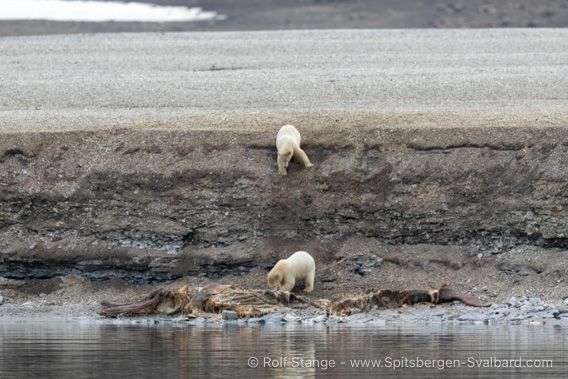
Polar bears enjoying a whale carcass (archive image, Hinlopen Strait 2023).
According to § 30 of the Svalbard environmental law (Svalbard miljølov), „it is forbidden to lure, to feed, to follow polar bears or to take any other action that may lead to disturbance or danger for people or the polar bear(s)” (author’s translation).
There will be new rules from 2025. Then, a minimum distance of 500 metres (until 30 June) respectively 300 metres (from 1st July) will be required by law.
Even that …
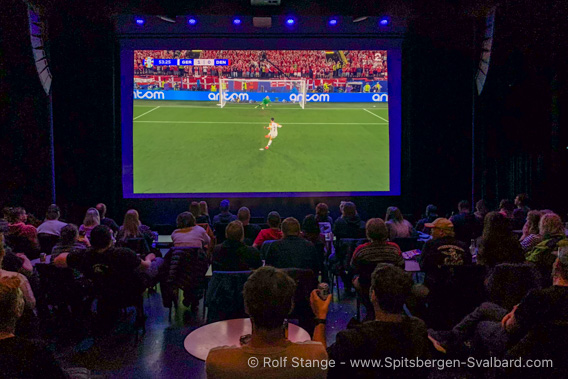
Public viewing on the big screen. Kulturhus Longyearbyen.
Quite likely the northernmost public viewing.
Photobook “Spitsbergen”: the stories behind the photos
The new photo book “Spitsbergen – cold beauty” has 227 images that take you on a comprehensive journey around Spitsbergen, both geographically, seasonally and regarding wildlife and a bit of history here and there.
I took the photos over a period of almost 20 years, on uncounted tours and journey from 2005 (when I had just bought my first digital camera) to 2023. For me, many of them are connected to unforgettable memories, and the decision for every single one came together with individual decisions against 1000 other images that might just as well have been in the book now.
In the book, the photos can and do speak for themselves. There is no long text to distract the eye. My own thoughts, stories and memories don’t matter there. But I would nevertheless like to share some of them. The place to do so is here. It might turn out to be a little series over time if you like. We’ll see what happens.
The first image: northern light
In the Arctic, the year begins in the middle of the polar night. Hence, so does the photo book. And how to illustrate the beauty of the polar night better than with a northern light?
A northern light photo was thus also the opener of the first version of the book in 2011. I remember how proud I was of my very northern light photos! But alas, I lacked all requirements for proper northern light photography. I dare to say that this resulted in a rapid development as far as I am concerned and things did improve. But the 2011 version of the book was printed, and every time I took a copy of that early edition up and saw that photo, I was kind of put off and I thought “that should be better”. Well, now it is. Over the years since then, I have spent countless cold evenings equipped with warm clothes, full frame camera, high quality prime lense and tripod in Adventdalen, where I took the photo of my final choice in 2019.
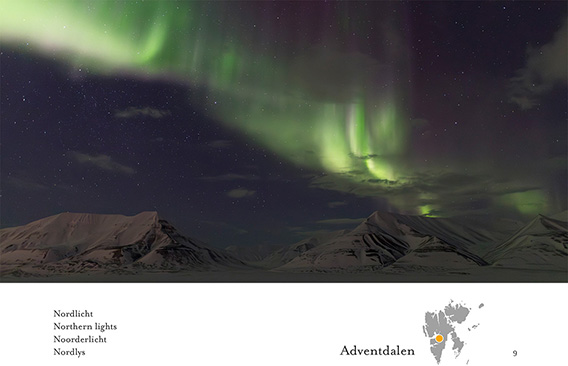
The first photo in my new photo book Spitsbergen: Cold beauty: northern light.
If you look at different polar light photos, on the internet, in books or magazines, they are often very bright and extremely colourful. There may be the odd exception, but in by far most cases this is a matter of exaggerated twisting knobs and buttons during image processing. It is important to resist this temptation, these results are not realistic.
That one northern light photo in the old 2011 edition would have been reason enough for a new edition of the book. Well, here it is, and this time I am happy with it 🙂.
The first sunlight
The return of the sun without several months of sunlight is always a very special event, anywhere in the Arctic. In Longyearbyen, which is surrounded by mountains, this does not happen before 08 March. If you have a free view to the south, you can enjoy that delightful view considerably earlier. In Farmhamna, a trapper station on the west coast of Spitsbergen, we could celebrate the return of the sun as early as 20 February during my time there in 2022, and this is when I took this photo.
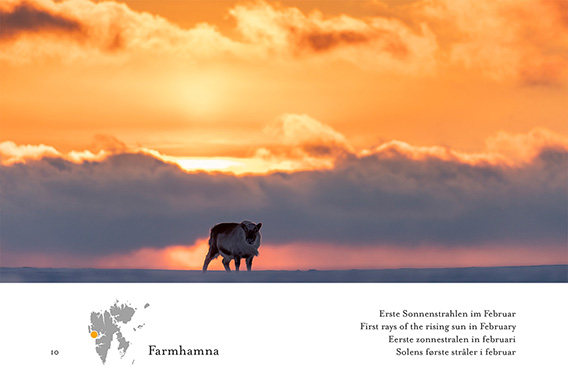
First sunlight in Farmhamna, 20 February 2022.
My time in Farmhamna will forever be amongst my treasured memories. There are several more photos from Farmhamna and surroundings that have made it into the new Spitsbergen photo book.
Page of the week: Langeøya
The Langeøya panorama is the page of the week. Langeøya is a small island in the southern part of Hinlopen Strait. The page as such has existed for a while, but now I have added some more information and picture. If you read German, then I recommend to have a look at the German version of the page which includes a quotation from Carl Koldewey, an explorer who visited Langeøya in 1868.
No preview here, but Langeøya is just one mouse click away!

The yacht “Grönland”, Koldewey’s ship in 1868.
Spitsbergen summer: chicks, champagne glasses, snow buntings
Thursday was the longest day in the northern hemisphere. This time it was the 20th of June and not the 21st because 2024 is a leap year. It varies anyway, in “normal” years it is sometimes also the 22nd or the 23rd of June, depending on the details of the Earth’s orbit around the sun. Anyway – 24th of June is Sankt Hans, and the night before is Sankthansaften (St. Hans’s evening), an event duly celebrated with huge bonfires and a drink or two.
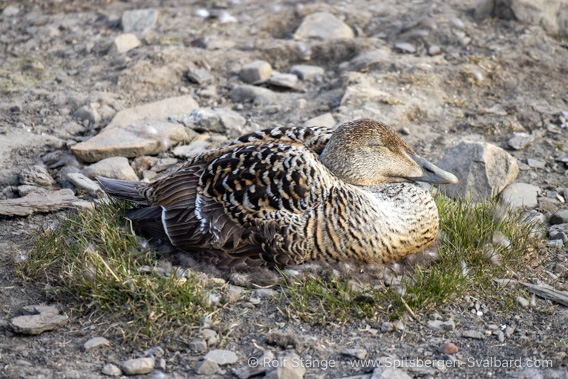
Common eider duck on her nest at the dogyard in Adventdalen.
Now the summer is here in full bloom. Common eider ducks and geese are busy breeding in their colonies in large numbers, and you can see the first chicks making their first steps in the tundra.
It is summer when the champagne glass breaks
It is “officially” summer in Longyearbyen when the stem of the champagne glass is broken. The “champagne glass” is a huge snow field with corresponding shape on Operafjellet, eight kilometres due east and easily seen from Longyearbyen.
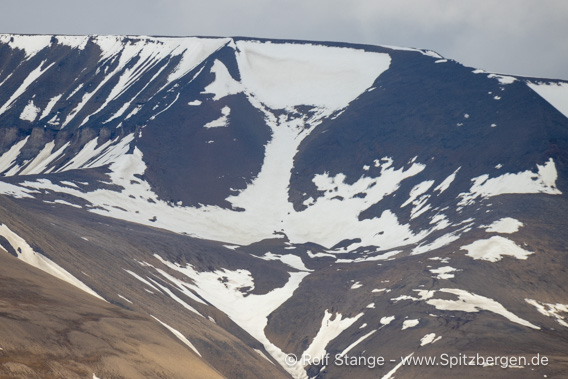
The “champagne glass”, a snow field on Operafjellet, on Sunday (16th June) …
With progressing snow melt, the stem will break and the food is then separate from the cup, and once that has happened it is summer. That’s how they do it here. It is a popular sport to predict the date of this important event, which this year happened last Tuesday, which is quite early. In other years this happened in late July, depending on the amount of snow and the timing of the snow melting period.
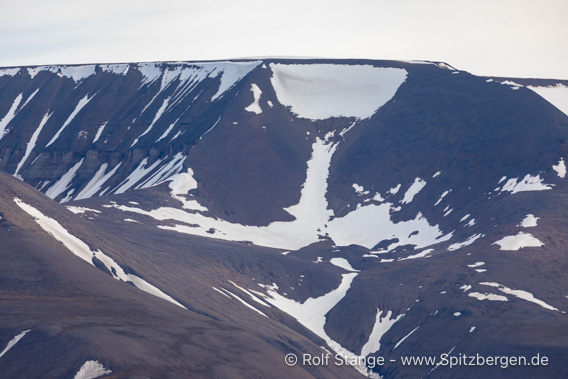
… and on Friday (21st of June).
Messengers of spring this year less abundant: decline of snow buntings
Many people in Longyearbyen had the impression that the numbers of snow buntings were lower this year than usual. The snow bunting is Spitsbergen’s only singing bird. It comes around mid April and the beautiful voice of the male brings pleasure to all who have just had half a year of winter.
The impression that numbers were and are lower this year were now confirmed by scientists from NINA (Norwegian Institute for nature research), as Svalbardposten wrote. The scientists maintain a long-term population monitoring project which now comprises 27 years. The project includes monitoring 100 nesting boxes in Adventdalen. Usually, between 40 and 60 nests are found in these boxes (in all of them together, not in every single box 😅). This year, however, the total number was nine.
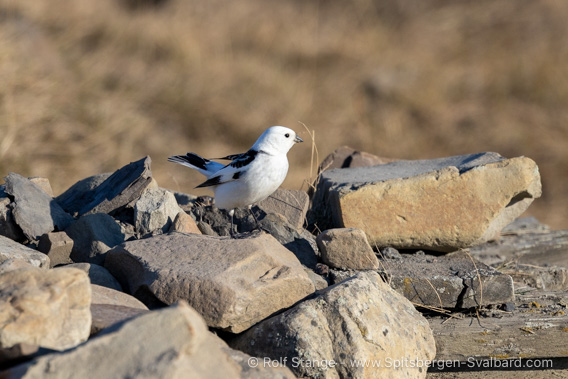
Snow bunting in Adventdalen in early June: this year in lower numbers.
The exact reasons are unclear, but just for a change, climate change is not amongst the primary suspects. Neither the conditions in the breeding areas in Spitsbergen. One theory is that a part of the population fell victim to extreme storms in the Barents Sea during the autumn migration. There were heavy storms in the Novaya Zemlya area last October, which fits regarding space and time. The bird flue and unusual cold temperatures in the wintering areas, the region around the border between Russia and Kazakhstan may also have played a role.
A rare extreme event of this kind leaves at least space for hope that the population may recover in years to come.
An evening in Adventdalen
An evening in Adventdalen in June can be a little journey to paradise, especially for those interested in birds. Start at the common eider colony at the dogyard near Longyearbyen (an easy walk in town and located in the area that is generally considered polarbear-safe, certainly at the time of year when the ducks are breeding there). Just sit down somewhere and spend a little while quietly and you will see what I mean.
The current impression on the wide tundra areas nearby and a bit further into Adventdalen is a slightly different one. It is just an impression, totally selective in space and time, but the impression is that there are far fewer geese grazing now on the tundra in lower Adventdalen than there used to be in previous years.
A comparison. The first picture is from July 2022 …
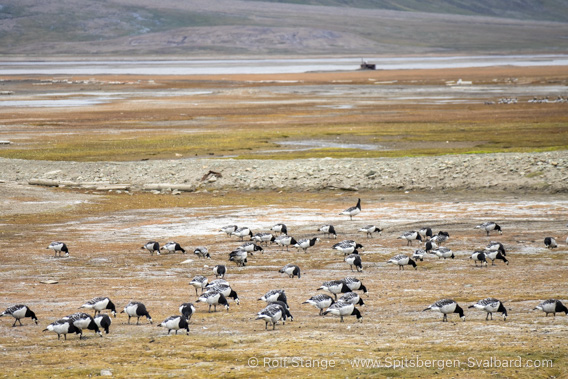
Geese in Adventdalen, 2022.
… and the second picture was taken on Monday (10 June 2024).
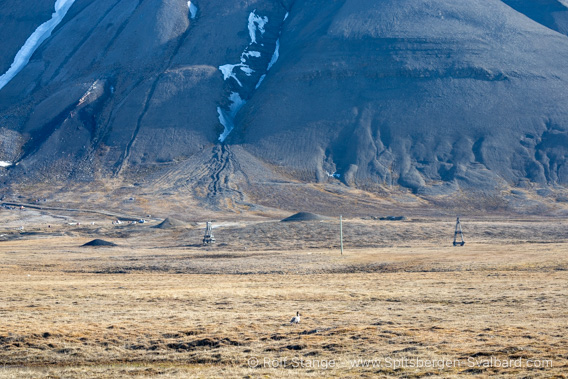
Geese (or not) in Adventdalen, June 2024.
Was it the bird flu?
The location of both photos is not exactly the same (there is a few kilometres between them, but both places used to have plenty of geese in the past), June is not July and 2024 is obviously not 2022. So, just to make it clear again – it is just an impression. No data, no science. But I found the impression quite strong and it is that there are fewer geese around. Maybe they already went for other areas in the spring of 2024? There was little snow in May, that might be a difference. Or was it the bird (avian) flu? This disease may have played a role, as it is reported to have killed about 1/3 of the Svalbard population of Barnacle geese, amounting to 13,200 birds as Scotland’s Nature Agency im wrote in Oktober 2023. A staggering number.
Many species of smaller birds
But a closer look reveals a lot of life, especially amongst smaller birds, as the following little selection of photos may show.
- gallery anchor link: #gallery_3064
Click on thumbnail to open an enlarged version of the specific photo.
First row, left: leucistic Barnacle geese are regularly seen, although very low in numbers. Middle: dunlin. Right: Red throated diver
Second row, left to right: Eurasian teal, reck-necked phalarope, snow bunting.
There were also some king eiders, but we saw them “only” in flight that time.
Especially Eurasian teal and reck-necked phalarope are amongst species that are not seen every day and everywhere in Spitsbergen. Lower Adventdalen has an impressive range of species, well worth a visit for bird lovers, and nature lovers in general.
New governmental Svalbard-declaration
The Norwegian government has presented a new “Svalbardmelding”, a new government policy statement for Svalbard politics for the upcoming years. It is the first one since 2016.
Strengthening Longyearbyen as an attractive place to live for Norwegian families will be a focus for the Norwegian government. Another one will be better control of critical infrastructure, certainly including Longyearbyen’s energy supply. Better (but not necessarily more) flats are another political goal, and so is strengthening employment rights. Svalbard’s science landscape will see a “science office”.
More details will have to wait a while. We left Longyearbyen in the afternoon with good old SV Antigua and we are looking forward to some beautiful days in northwestern Spitsbergen. News will have to wait a while, but the travel blog should get some updates over the next couple of days 🙂
Polar fox birth on film
The Norwegian Institute for Nature Research (NINA) has filmed a polar fox mother giving birth to 8 cute little fox babies. This remarkable event took place in captivity in mainland Norway, within a project designed to release polar foxes into the wild.
Click hiere to access a short video on Youtube showing segments of the birth. It is really worth seeing, even if you don’t understand the Norwegian comments (it is about the researcher’s interest to learn more about survival rates in and outside the den).
Furthermmore, there is a livestream from the artificial den. Don’t miss it while there is still some action in there! 🦊🐱🐱🐱🤩
P.S. in case the above link to the livestream does not work, try to access the one on NINA’s website. It appears to change sometimes.
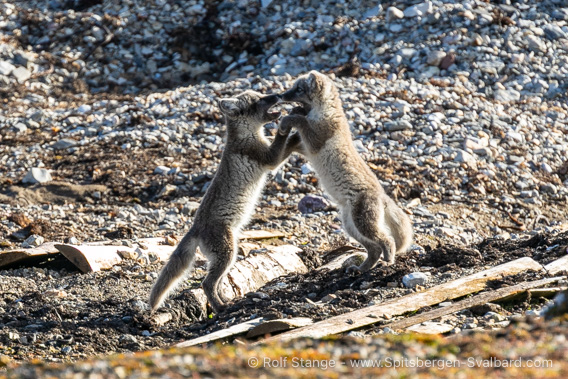
Polar foxes near Ny-Ålesund: probably siblings. Photo taken in August, several months after they were born (symbolic image).
Reindeer with rabies near Ny-Ålesund
A reindeer was observed near Ny-Ålesund in early May that showed unusual behaviour that pointed towards rabies, including partly paralysed hind legs. The animal was later, however, not found again so a rabies infection could not be confirmed although it appears likely.

Rabies is dangerous both for animals and humans (symbolic image).
Rabies outbreaks have been recorded several times in Svalbard. The pathogen may for example travel long distances with polar foxes that can migrate on sea ice. Long-distance migrations such as from Russia to Spitsbergen or from Spitsbergen to Canada is possible. Different mammal species such as foxes, reindeer, seals and dogs may be affected, and the disease can be very dangerous also for humans. It is generally strongly advised not to touch any dead animals.
Distance regulations for polar bears in force from 2025
As expected, the Norwegian Parliament has passed new regulations regarding minimum distances to be kept from polar bears (and other stuff). The new rules will thus come into force in 2025.
This means that a minimum distance of 300 m is required to be kept from any polar bear, regardless of the circumstances. If a polar bear is discovered within this distance or if it comes closer (swimming or walking on ice or land), then you have to move away. This includes boats that are anchored. During spring (01 March – 30 June), the minimum distance is 500 metres.
This is valid anywhere in Norwegian waters such as Svalbard’s 12 mile zone.
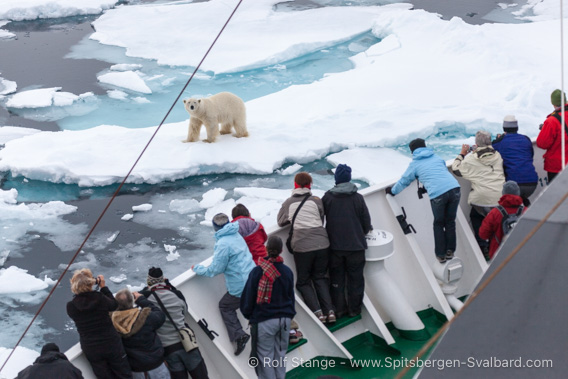
A common way to observe a polar bear is from a ship. In the case, the bear was curious and it had decided to approach the ship. No disturbance or risk involved.
Nevertheless forbidden in Norwegian waters from 2025.
Comment
The issue has, as you might imagine, been matter for a heated public debate for some time, which has been reflected on this site more than once. There is no need to go into detail here again. Many, including a number of people with significant relevant experience, have expressed that the new regulations are rubbish, to put it bluntly. This includes this author. The new rules will do little for animal protection or to prevent risky situations, but they will greatly damage the tourism and film industry. The regulations in force so far forbid approaching a polar bear in any way that would involve a risk of disturbance or even danger to animal or people, and that is good enough. As far as there were problems, they were not due to a lack of regulation but rather a lack of control and enforcement. The lack of control and enforcement will continue in the future, but from 2025 on existing meaningful regulation will be replaced with overregulation.
Dangerous situations occur often in connection to camps or huts, and the new regulations will not make a difference here.
17th May in Longyearbyen
17th of May is the Norwegian national day, a big day that is celebrated everywhere in Norway with flaggs, processions and cultural events.
Also in Longyearbyen. Here are some impressions from the central event, the assembly on the “Torget” (square) with speeches and subsequent procession. In addition, there was a range of other events from commemorations to an evening in the culture house with music etc.
Visit from Barentsburg, speeches translated to Russian
There were at least some visitors from the neighbouring Russian settlement of Barentsburg, namely a group of children who contributed with singing to the morning’s church service. Other than the children’s escorts, there was no adult delegation as no official representatives from Barentsburg were invited. All speeches were were translated into Russian. During the central assembling, Lokalstyreleder (“mayor”) Terje Aunevik found suitable words addressing the background of the day’s celebrations which emphasize family-friendly events, childrens’ procesions and culture in contrast to military parades, celebrating democracy and freedom rather than military victories such as certain neighbouring countries. Without explicitely mentioning Russia or the Russian war of aggression in the Ukraine, but clearly referring to these, Aunevik unmistakably highlighted the importance of democracy, freedom and peace.
- gallery anchor link: #gallery_3028
Click on thumbnail to open an enlarged version of the specific photo.
There may have been those individuals in the crowd who silently and possibly not without some sadness thought of the blow local democracy in Longyearbyen had suffered quite recently when non-Norwegian residents were deprived of their voting rights.
Sami symbols
The last picture shows a Sami national costume (“samekofte”) and flagg. It was not too long ago that public display of such Sami symbols on the national day was accepted. Just 10 years ago, it was allowed but often seen as provocative and hence still matter of a sometimes loud and more or less heated public debate. Longyearbyen has a small number of inhabitants with Sami roots (in an everyday context, most will perceive them as Norwegians, which is true but not the entire story).
Property for sale in Recherchefjord
It is almost tempting to write “Spitsbergen about to become Chinese”, but no, that is not the level we are working at here. That would be nonsense, although you might almost have believed it, looking at some recent headlines.
Property in Svalbard: that’s how it started
We have to go back to the beginning of the 20th century for a moment. Spitsbergen was no man’s land and companies, many small and a few larger ones, came and claimed rights, thinking mining would be a way to make a fortune up north. Most companies were far too small and did not have the experience or the funds to start mining at industrial level, but some did, such as John Munro Longyear’s Arctic Coal Company which founded Longyearbyen (then known as Longyear City) in 1906.
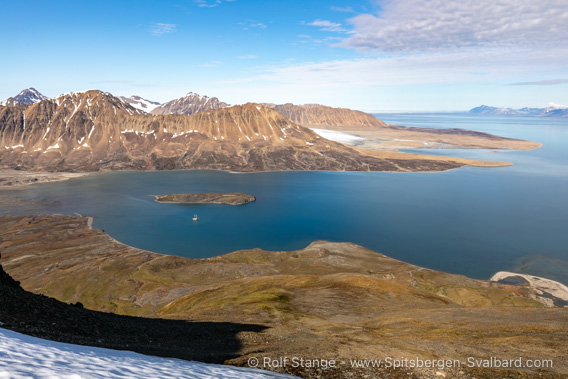
60 sqare km of property are now on offer in Recherchefjord – for 300 million Euro.
Many of the small companies quickly ran out of money, and some of them sold their claims to others. Many of the claims were overlapping. It took years to sort this mess out, a process that was required to be finished before the Spitsbergen Treaty could enter force in 1925.
Companies continued to sell their various properties also after 1925, and so did successors and heirs. Often it had become clear that there would never be any mining or other kind of land use before land or claims would be sold. Usually the Norwegian state secured properties and mining rights to get Svalbard’s land areas under control. By now, 99 % of Svalbard’s ground are owned by the Norwegian government. The Russian state-owned mining company Trust Arcticugol owns some smaller land areas in Isfjord (Barentsburg, Colesdalen/Grumant, Pyramiden, Erdmannflya) – and then there is Kulspids AS, one of many companies that were founded in the early 20th century to explore and exploit mineral resources.
Kulspids AS
Kulspids AS secured a land area of 60 square kilometres in inner Recherchefjord. Asbestos is one mineral found in the area and mining was attempted, but not successful. Kulspids AS still exists and still owns the property, which today’s owners of the company now want to turn into money, as was initially reported by Bloomberg. The story was quickly picked up by various Norwegian media including NRK.
“All bidders welcome” is the seller’s message, addressing individuals, companies and governments alike. It is pointed out that also governments such as the ones in China or Russia could buy the property, if a price could only be agreed on. And of course the geopolitical significance of arctic areas in general is also highlighted by Kulspids AS representative.
Geopolitical significance – or not
Whatever the geopolitical significance actually might include is, hower, unclear: any new owner, as well as the current one, has to comply with the Svalbard environmental law and the Spitsbergen (Svalbard) Treaty. This makes pretty much any kind of land use impossible. No future owner, including the government of China (or Russia, for that sake) would legally be able to build a hotel, a harbour, a research station, a mine or a military base. Nobody would even legally be able to drive a snow mobile without special permission from Norwegian authorities, which would be difficult to get. The geopolitical significance of the property beyond prestige is hence doubtful.
Considering the above, researcher Andreas Østhagen of the Fridtjof Nansen Institute recommends the Norwegian government to remain calm and not make a very expensive panic purchase, according to Svalbardposten. The minimum bid is set at the proud amount of 3.5 billion (yes, billion!) Norwegian kroner – currently about 300 million Euro. For comparison: at the latest comparable transfer in 2014, when a large property on the north side of Adventfjord was sold, the price was near one tenth of today’s minimum bid. Even then, the price was controversial – and mining or other land use would at least in theory have been possible, considering the property sold in 2014 was not part of any national park or other specially protected area.
Hence, it seems fair to assume that pointing at any geopolitical or other importance of the property in Recherchefjord or at potential buyers such as China primarily serve as a tool to push the price and to increase the pressure on the Norwegian government to secure the land for Norway. Nothing is so far known about any buyers actually being interested or any serious bids.
Meanwhile, a spokesperson of the Norwegian government said that the government had actually made an offer in the past which was considered generous considering that the property does not come with any land use potential. The offer was turned down by Kulspids AS. It was also said that because of an old contract between the government and Kulspids AS, the property can not be sold without government approval.
In any case, this is the very last major land area in Svalbard still in private hands. Once it is sold, the time of major properties changing from one owner to another will be over. There are very few other, small private properties in Svalbard. In those cases where for example a private person owns a house in Longyearbyen, the property as such does not include the land the house is standing on – this is already government property.
News-Listing live generated at 2025/May/04 at 03:15:05 Uhr (GMT+1)
